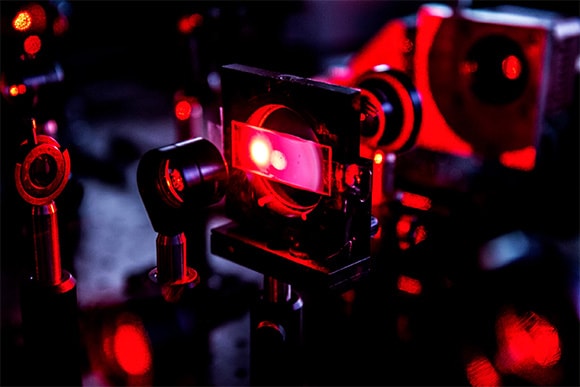
- Semiconductor Technology Now
Science News
Can We See through the Human Body with Visible Light?
August 7, 2017

|
Wilhelm Röntgen's discovery of X-rays in 1895 revolutionized medicine. The mysterious electromagnetic waves that penetrate the human body made it possible to observe disorders in the bones, lungs, etc. without surgical procedures. There is a downside to X-rays, however. Computer tomography (CT) imaging devices emit high energy, generating a risk of radiation exposure. There is another widely used body scanning method that does not use X-rays, but MRI (magnetic resonance imaging) machine tends to be large and bulky, and no magnetic materials can be brought inside the MRI room.
Researchers seeking an alternative to X-rays and MRI are now taking a closer look at visible light as a means for imaging the inside of objects. The advantage of using visible light is that devices can be made small and at low cost. On the flip side, though, the objects to be scanned by such a device must be as thin as an eggshell, because visible light has low energy levels and can easily be scattered on the material's surface. However, a research team at the University of Michigan found a new approach that could overcome these difficulties.
One of the obstacles for peering into an object with visible light is the fact that the paths of light bouncing off of molecules are extremely hard to predict. There is a technique called holographic method, which involves measuring the interference patterns to calculate how light would scatter. But the method requires several measuring sessions, and the process takes too long to be useful for medical purposes.
University of Michigan researchers thought creatively, and chose to focus on the brightness of the light rather than its actual paths. Using a spatial light modulator, the team radiated hundreds of different laser beam patterns on an object, measuring the brightness of the outgoing light. They then analyzed the results with an original algorithm to determine how the light is scattered through the object.
For the purpose of demonstration, the researchers used a slide filled with crushed glass and yogurt, a medium that scatters the light just like natural human skin does. Ordinarily, a visible laser beam radiated on such a material simply scatters away. Thanks to the above-mentioned algorithm, however, the team could precisely manipulate the beam passing through the slide, spelling the word "MICHIGAN" in 157 shots in a matter of minutes.
Admittedly, calculating the scattering pattern of visible light on the material surface is only the first step, but the advancement of imaging technology can be incredibly fast, if its progress in recent years is any indication. The team anticipates to see the first visible light images taken through skin within the next five years.



















